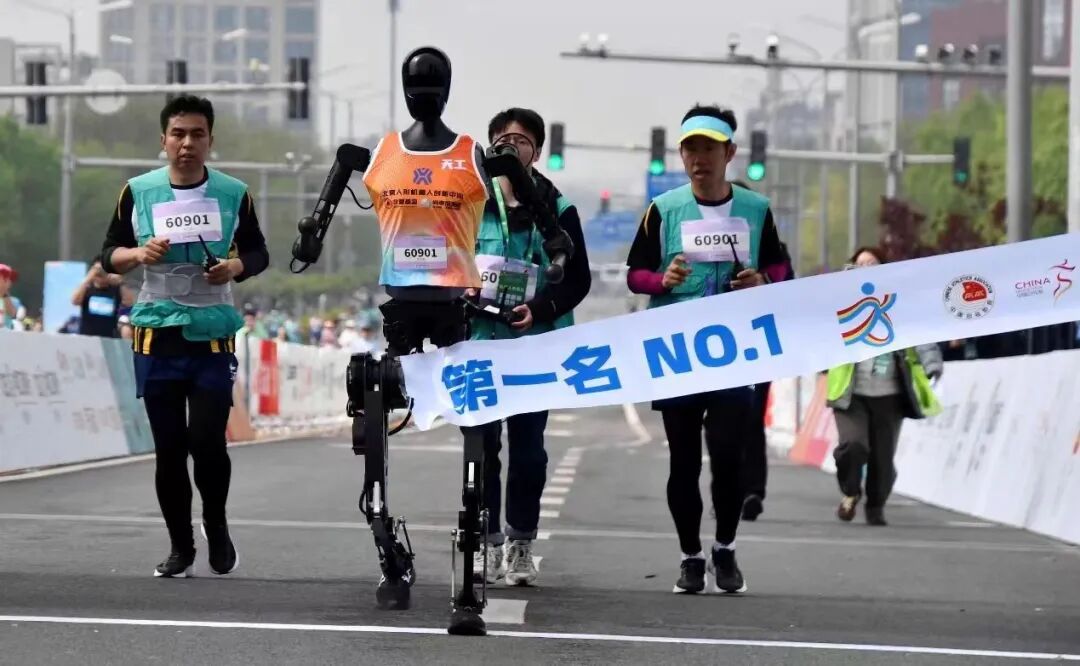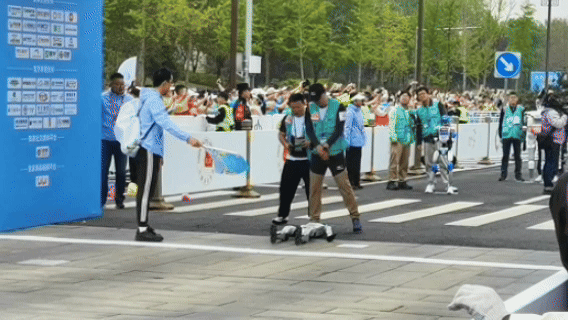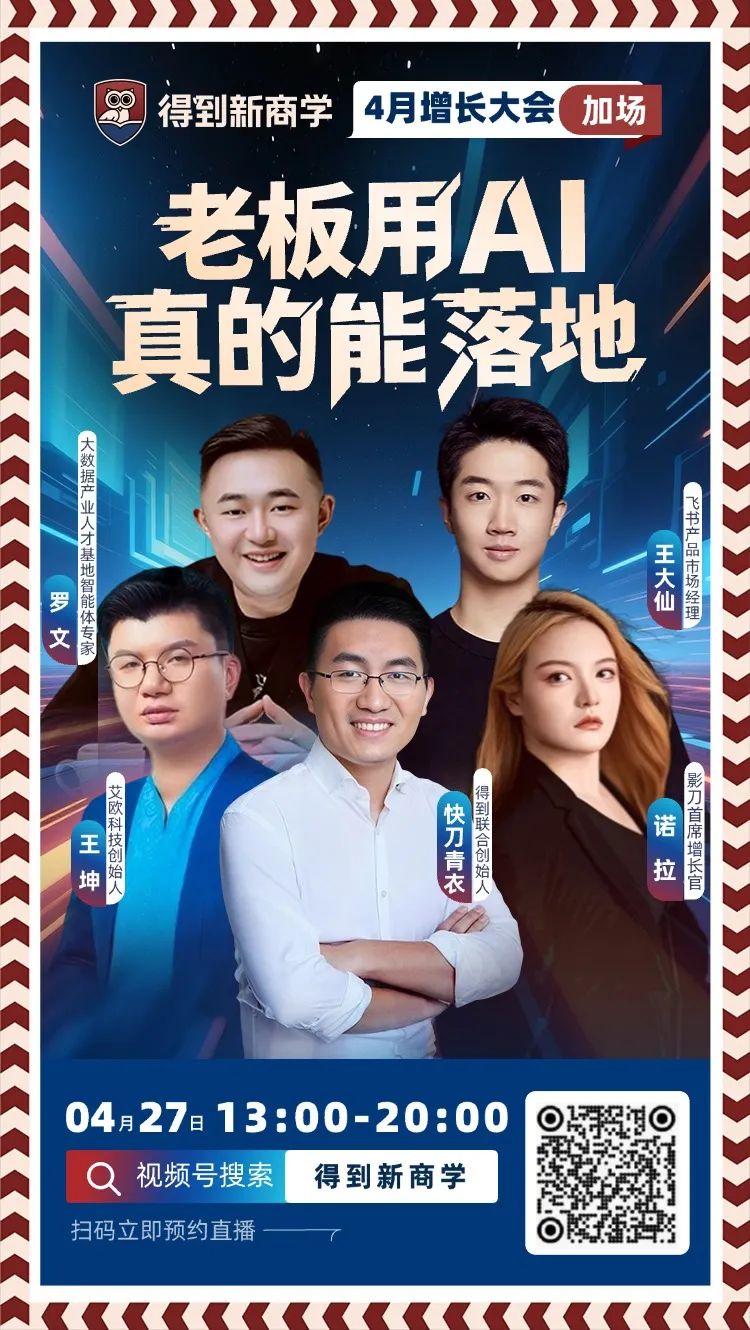Just last week, two significant events occurred in the field of humanoid robots in China.First, on April 15, the second China Humanoid Robot and Embodied Intelligence Industry Conference was held in Beijing. At this conference, the Lide Robot Platform led the release of the “2025 Humanoid Robot and Embodied Intelligence Industry Research Report”.The report predicts that by 2025, the humanoid robot industry is expected to rapidly transition from the “technology validation phase” to the “mass commercialization phase”.The market size is expected to reach 8.239 billion yuan, and by 2030, the embodied intelligence market in China will reach 103.752 billion yuan, accounting for 44.6% of the global market.The second significant event was the world’s first humanoid robot half marathon held in Yizhuang, Beijing, on April 19. Although the race took place five days ago, its subsequent impact continues to resonate.Author: Da Zhen
Source: Get App “Get Headlines”
01
Three Highlights of Robots Running a Marathon
The most direct impact of this marathon is reflected in the stock prices of various companies.The champion, Tiangong Ultra, led to a surge in stock prices, with the participating company, Jingcheng Co., experiencing a leap in stock price after the race. Other companies involved in the joint development, such as UBTECH and the sensor provider, Keli Chuan, also saw their stock prices rise to varying degrees. The runner-up, Songyan Power, also saw its technical support partner, Liard, and strategic partner, Fengyuzhu, experience stock price increases.Meanwhile, robots that fell and failed to complete the race faced significant pressure on their companies’ stocks.The entire race covered 21 kilometers, with 20 robot teams participating alongside 12,000 human competitors, and various media reports and live broadcasts added significant attention to the event. This transformed the marathon into the first civilian parade of the humanoid robot industry.So, what can we discover from this robot parade?First, looking at the participating teams, the competitors can be divided into three main categories. These are also the three important participants in the current humanoid robot field.First is the “national team”.For example, the champion robot “Tiangong Ultra” was jointly developed by the Beijing Humanoid Robot Innovation Center and UBTECH Technology, backed by the humanoid robot industry innovation platform supported by the Beijing municipal government, and is part of a national-level technical project.

Tiangong Ultra crosses the finish line
Image source: “Beijing Association for Science and Technology” public accountSecond is the “corporate team”.These companies mainly come from Shenzhen, Beijing, and Shanghai. For example, UBTECH, Leju, Zhuoyide, Songyan Power, Yushu Technology, Fourier Intelligence, etc.Third is the “university team”, coming from various universities and research institutions.For instance, the “Kua Fu” developed by the Beijing General Artificial Intelligence Research Institute and the Department of Automation at Tsinghua University; the “Shennong” developed by the Huazhong University of Science and Technology team; and the “0306” Little Giant from Beijing University of Science and Technology.Next, let’s look at the performance of each team.In terms of speed, the completion rate of the robots was 30%. Out of the 20 participating teams, only 6 completed the race. The champion, Tiangong Ultra, took 2 hours, 40 minutes, and 42 seconds to finish, reportedly achieving an average speed of 10 kilometers per hour. The runner-up, N2 robot, took 3 hours, 37 minutes, and 50 seconds; and the third place, Walker No. 2, took 4 hours, 25 minutes, and 56 seconds.In other words, the current long-distance running capability of humanoid robots is roughly equivalent to a brisk walk for an adult.In terms of appearance, Tiangong Ultra stands 1.8 meters tall, making it the tallest in the race, with a physique similar to that of an adult. In contrast, the “0306” Little Giant from Beijing University of Science and Technology is only 75 centimeters tall, making it the shortest and resembling a child.The most dramatic moment was when the highly anticipated G1 from Yushu Technology fell at the start but got back up and continued the race. After the race, Yushu Technology responded that the company did not directly participate in the race, but rather other independent teams used their robot to compete.
The Yushu robot quickly got up after falling and continued the race, earning applause from the audience
Image source: “Beijing Association for Science and Technology” public accountMeanwhile, the robot “Huan Huan” from Baosteel was recognized by netizens for its human-like appearance, but unfortunately, it had to withdraw from the race due to overheating of its joint sensors.It is worth noting that overheating was a common challenge for the robots this time. Logically, covering 21 kilometers should be easy for robots, so why did overheating occur? This is mainly because running is a challenging task for robots, requiring massive computations to perform reasonable movements. Excessive computational load leads to overheating of components.The champion, Tiangong Ultra, is equipped with computing power reaching 550 trillion operations per second. Indeed, achieving this level of computing power is necessary to ensure a long-distance running speed of 10 kilometers.As we often say, many tasks that are difficult for humans are simple for robots, but many tasks that are simple for humans, such as running, are quite challenging for robots.This marathon, rather than being a competition, is more like a sharing of information.For the participating teams, the key may not be to win the race, but to see each other’s strengths and their own weaknesses. If you ask whether it is possible to create more advanced humanoid robots with the current technology level in China, the answer is theoretically yes.Based on the performance in this competition, if a robot can simultaneously possess the following technologies, including the compliant control and torque planning of Tiangong Ultra, which allows the robot to achieve soft landings of joints while running to avoid impacts; the energy recovery algorithm of Walker No. 2, which can enhance endurance; the self-developed 3D visual sensing of the EAI team, which can improve navigation capabilities in complex terrains; the graded porous insoles of Songyan Power, which can cushion vibrations; and the graphene heat dissipation technology from Baosteel, etc.Theoretically, if subsequent companies can learn from each other and integrate these dispersed technologies from different companies, it is entirely possible to create humanoid robots that surpass the current level.As Liu Xingliang, an expert from the Ministry of Industry and Information Technology’s Information and Communication Economic Expert Committee, said, the participation of humanoid robots in marathon events is not only a demonstration of technology but also has far-reaching implications for industry development.
02
Only by Facing Problems Can We Solve Them
Of course, this competition not only showcased the potential of technology but also exposed many technical bottlenecks. Why did the robots suddenly collapse? Why did staff need to accompany them throughout the race? Why did they fall so easily?Regarding these issues, we can refer to the observations of teacher Liu Run. In simple terms, there are three core technical bottlenecks.The first bottleneck is spatial intelligence.This is often mentioned in discussions about autonomous driving technology. What is spatial intelligence? In simple terms, it is the robot’s ability to accurately perceive and judge in real, complex, and dynamic environments.Currently, this technology remains one of the biggest challenges in the field of robotics. Take autonomous driving as an example; the mainstream technology is still at the level of assisted driving, and there is a long way to go before achieving fully autonomous driving. Returning to this competition, the need for technicians to accompany the robots with remote controls throughout the race is also due to the shortcomings in spatial intelligence technology.The second technical bottleneck is dexterous hands.In this marathon, most attention was focused on the robots’ legs, but another very important technical aspect is the flexibility of the hands. You see, if humanoid robots are to be integrated into real-life scenarios, whether it is picking up a cup, pressing a switch, driving, or cooking, these tasks all rely on the hands.However, currently, many demonstrations of humanoid robots focus mainly on the legs, such as doing flips, dancing, and running, primarily because the complex operations of the hands are too difficult to achieve. For example, for a humanoid robot to pick up a paper cup, it needs to determine how much force to apply, whether there is water in the cup, and whether the water is hot or cold, all of which require a complex perception system.For instance, the humanoid robot H1 that performed on the Spring Festival Gala stage was able to toss a handkerchief smoothly, relying on two technologies: micro motors and magnetic release mechanisms. These two technologies are similar to a small fan and a magnet, one responsible for throwing the handkerchief and the other for pulling it back. It does not rely on the fingers themselves.The third technical challenge is battery endurance.Professor Li Qing, founder of Shanghai Zhuoyide Robot Co., and a professor at Shanghai University of Technology, stated that the endurance issue has two bottlenecks: one is the energy density of the battery, and the other is the power density of the motor.The energy density of the battery refers to the amount of energy stored per unit mass or volume, which directly determines how much energy the robot can carry. Currently, even though the energy density of mainstream lithium-ion batteries is approaching theoretical limits, it is still difficult to meet the needs of humanoid robots.On the other hand, the power density of the motor refers to the output power per unit mass or volume, determining how strong a robot can perform. The challenge here is that increasing power density usually requires increasing current or magnetic field strength, which can lead to copper loss and iron loss.In simple terms, heat dissipation is a challenge. If these two bottlenecks are not overcome, the practical application of humanoid robots will be very difficult.Finally, returning to this competition, the Chief Technology Officer of the Beijing Humanoid Robot Innovation Center, Tang Jian, made a vivid analogy.He said it is like the first automobile race held in France in 1894. Although many problems arose during the event, and many questioned the necessity of the race, it was precisely because this race revealed many technical issues that prompted various automobile manufacturers to gradually solve them, promoting the widespread application and prosperity of the automotive industry.It is said that during that time, very few cars could successfully complete the 100-kilometer course, with some breaking axles, leaking oil, and some even failing to start. The fastest car took over ten hours to finish, and was even mocked by a group of carriage drivers, but none of this stopped the development of the automotive industry.To borrow the words of Ji Chao, the chief scientist of iFlytek robots, returning to the essence of technology, adjusting public expectations, and ensuring a healthier bubble, we must start from practical applications.Only by facing problems can we solve them.👆👆tips: Dear readers, due to WeChat’s push rules, even if you follow us, you may often miss our updates. Remember to click on the “Logic Thinking” card and set it as a star ⭐️, and articles will be automatically pushed to you every day!

Recommended Reading

World Book Day: When the Heart Has a “Must”, the World Has a “Can”
04-23 Reading allows knowledge to flow through your body

Which Childhood Habit Determines Future Success?
04-15 How to Cultivate Children’s Self-Control?

Those Truly Amazing People Are Secretly Playing with “Slow Dopamine”
04-20 Understanding Slow Dopamine and Fast Dopamine

Make Children’s Learning Addictive Like Playing Games, Use These Three Tips
04-21 “Making Thinking Addictive”, a Practical Parenting Guide
On April 27, Get New Business School arranged an additional session for entrepreneurs, focusing on the AI theme of the April Growth Conference.“Can Bosses Really Implement AI?”This time, the invited guests are five who have been early adopters in AI, achieving good results and sharing reusable experiences.
They will discuss practical strategies: How to use AI to enhance services and increase conversion rates?How to break through industry competition using AI for a leap forward? These are all topics of genuine concern for bosses, and they will all be covered!
This live broadcast will not have a replay, so we recommend all entrepreneurs to attend! Click the card below to make a reservation. In the live room, you can also receive the guest’s sharing PPT.


Click “Read the Original” to subscribe to “Get Headlines”